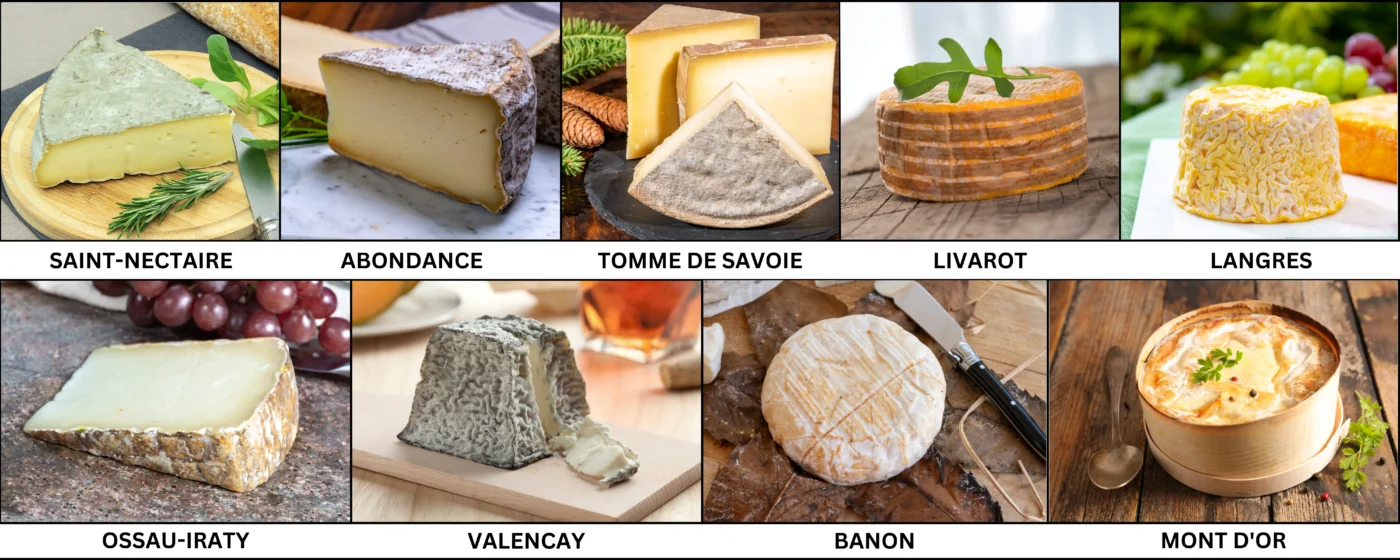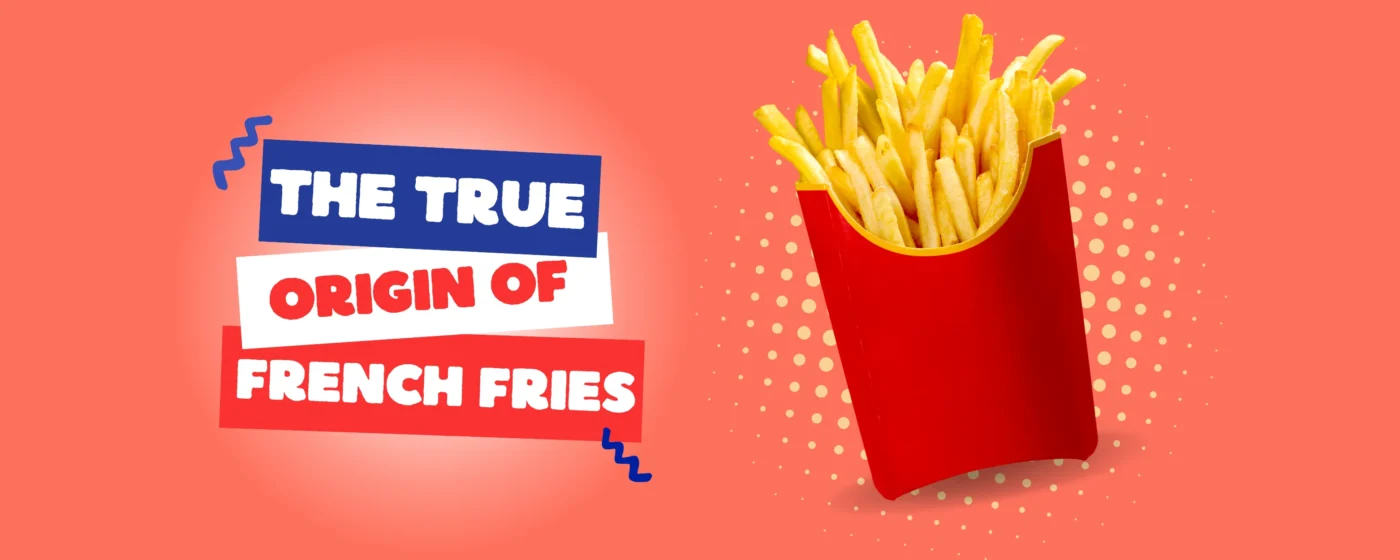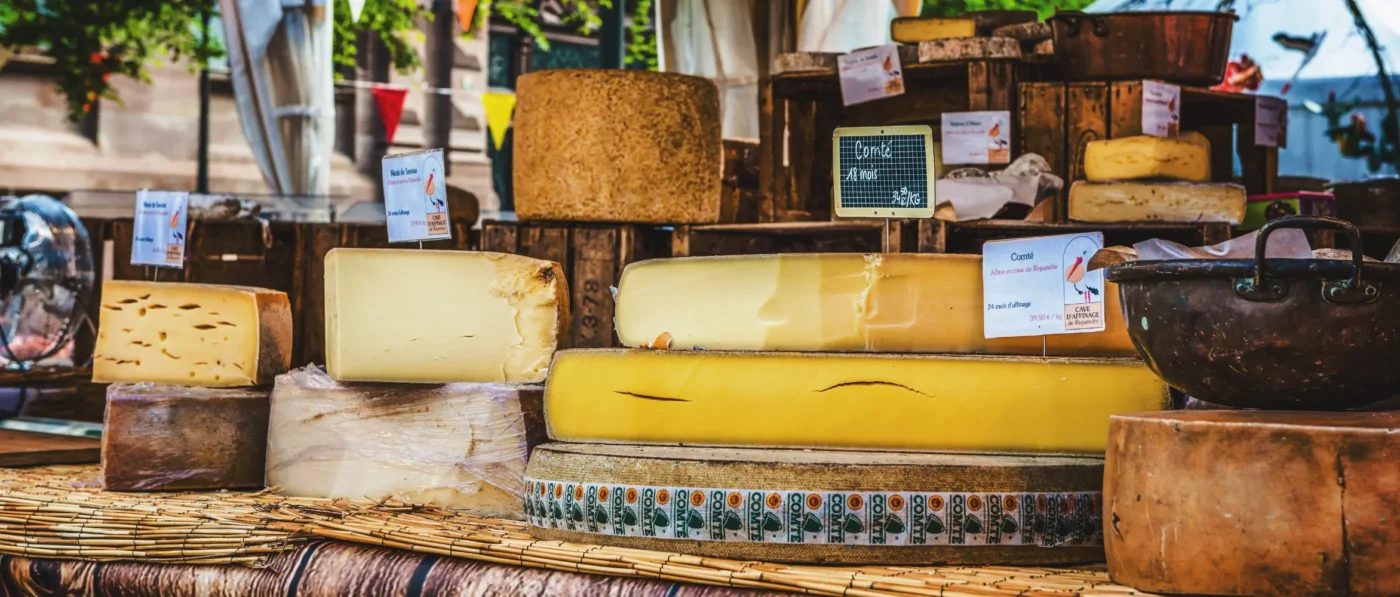Cheese is not just a food in France; it’s a cultural icon. French cheese embodies the essence of French cuisine, reflecting its diversity, richness, and centuries-old traditions. From creamy Brie to tangy Roquefort, French cheeses offer a delightful journey for the taste buds. Each cheese tells a story of its region, its history, and the artisans who craft it with care.
A Brief History of French Cheese
French cheese-making traces back centuries, evolving through various influences. Monasteries played a pivotal role in refining techniques, while regions developed distinct cheese traditions. Over time, French cheese gained international acclaim for its quality and variety. The mediaeval era saw the emergence of many cheese varieties, as monks and farmers honed their skills and exchanged knowledge. Later, during the Renaissance, French royalty and nobility developed a taste for fine cheeses, further elevating their status.
Classification of French Cheeses
French cheeses are renowned for their diversity, which is reflected in their classification based on various factors.
Cow’s milk cheeses, such as Brie and Camembert, are celebrated for their creamy textures and mild flavours, while goat’s milk cheeses like Chèvre offer tangy and earthy notes. Sheep’s milk cheeses, such as Roquefort and Ossau-Iraty, provide a distinctive richness and complexity.
Soft cheeses like Brie and Camembert melt in the mouth, while semi-soft cheeses such as Reblochon and Munster offer a creamy yet slightly firmer texture. Hard cheeses like Comté and Beaufort provide a firm and dense consistency, perfect for grating or slicing. Blue cheeses like Roquefort and Bleu d’Auvergne add a bold and tangy flavour profile, with characteristic blue veins running through the cheese.
Fresh cheeses, such as Mozzarella and Fromage Blanc, are enjoyed shortly after production, with a mild and delicate taste. Aged cheeses like Comté and Beaufort undergo a maturation process ranging from a few months to several years, developing complex flavours and aromas. Long-aged cheeses, such as Parmesan and Gouda, are aged for extended periods, resulting in intense flavours and crystalline textures.
The origin of French fries is debated, with Belgium and France both claiming credit. Learn the fascinating history behind this iconic dish.
Famous French Cheeses
Brie
Creamy and mild, Brie originates from the Île-de-France region, where it has been produced since the 8th century. This versatile cheese is perfect for spreading on bread or crackers, and its delicate flavour pairs well with fruits and nuts.
Camembert
Hailing from Normandy, Camembert boasts a creamy texture and earthy flavour, making it a favourite for cheese boards or baking. Legend has it that Camembert was invented during the French Revolution by Marie Harel, a farmer’s wife, who sheltered a priest and received the recipe in gratitude.
Roquefort
This blue cheese from the south of France is sharp and tangy, thanks to the unique mould Penicillium roqueforti. Dating back to ancient times, Roquefort is aged in natural caves, where the cool, damp conditions foster its distinctive flavour. It is often crumbled over salads or served with honey and nuts for a gourmet treat.
Comté
A hard cheese from the Jura region, Comté offers a nutty flavour with hints of fruit and caramel. Made from raw cow’s milk, Comté is aged for at least four months, resulting in a complex, nuanced taste. It is perfect for melting in fondues or grating over pasta dishes.
Reblochon
With a creamy texture and earthy aroma, Reblochon is perfect for tartiflette, a traditional Alpine dish made with potatoes, bacon, and onions. This washed-rind cheese has been produced in the Savoie region since the 13th century, using milk from cows that graze in the mountain pastures.
Munster
Originating from Alsace, Munster is a strong-smelling cheese with a rich, creamy taste. It is traditionally made in small, round blocks and aged for several weeks to develop its pungent aroma. Munster pairs well with dark bread and beer, making it a staple in Alsatian cuisine.
Chèvre
French goat cheeses come in various textures and flavours, from tanguy Chèvre frais to aged Chèvre sec. These cheeses are prized for their fresh, tangy taste and creamy texture, making them perfect for salads or desserts. Goat cheese has been produced in France for centuries, with each region putting its own unique spin on this beloved ingredient.
Époisses
Known for its strong aroma and creamy texture, Époisses is a washed-rind cheese that originated in the Burgundy region. This pungent cheese is aged for several weeks in damp cellars, where it develops its distinctive orange rind and soft, gooey interior. Époisses pairs well with crusty bread and fruity wines, making it a popular choice for cheese connoisseurs.
Beaufort
A semi-hard cheese from the Alps, Beaufort offers a nutty flavour with hints of sweetness. Made from the milk of Taurine and Abondance cows, Beaufort is aged for at least five months, resulting in a rich, complex taste. It is often used in fondue or gratin dishes, where its creamy texture and savoury flavour shine.
Pont-l’Évêque
With a washed rind and creamy texture, Pont-l’Évêque is perfect for cheese boards or sandwiches. This square-shaped cheese has been produced in Normandy since the 12th century, using techniques that have been passed down through generations. Pont-l’Évêque pairs well with crisp apples and cider, making it a favourite in the region’s cuisine.


Dine in Style, Speak with Flair!
Join our courses to enjoy the rich culture of France while mastering the language!
Lesser-Known French Cheeses
Saint-Nectaire
Semi-soft with a nutty flavour, Saint-Nectaire is perfect for melting or snacking. This cheese has been produced in the Auvergne region since ancient times, using milk from Salers cows that graze on the lush, green pastures of the Massif Central.
Abondance
A semi-hard cheese with a fruity aroma, Abondance pairs well with charcuterie or salads. This cheese has been made in the Haute-Savoie region for over a thousand years, using traditional methods that have been passed down through generations.
Tomme de Savoie
Semi-soft with a tangy flavour, Tomme de Savoie is ideal for sandwiches or omelettes. This cheese is made in the Savoie region using milk from cows that graze on the alpine meadows, giving it a distinctively fresh and grassy taste.
Livarot
Known as the “Colonel,” Livarot is a pungent cheese with a rich, creamy taste, perfect for cheese boards or pasta dishes. This cheese has been produced in Normandy since the 16th century, using techniques that have been refined over generations.
Langres
With a washed rind and creamy texture, Langres is perfect for spreading on bread or crackers. This cheese has been made in the Champagne region since the Middle Ages, using milk from cows that graze on the region’s lush, green pastures.
Ossau-Iraty
A firm cheese with a nutty flavour, Ossau-Iraty pairs well with fruits or nuts. This cheese has been made in the Basque Country for centuries, using milk from Manech and Basco-Béarnaise sheep that graze on the rugged mountainsides.
Valencay
With a distinct pyramid shape and earthy flavour, Valencay is perfect for cheese boards or salads. This cheese has been made in the Loire Valley since the 18th century, using techniques that have been passed down through generations.
Banon
Wrapped in chestnut leaves, Banon boasts a creamy texture and tangy flavour, ideal for picnics or desserts. This cheese has been made in Provence since ancient times, using techniques that have been preserved by local artisans.
Mont d’Or
Mont d’Or, also known as Vacherin du Haut-Doubs, is a seasonal cheese made from cow’s milk in the Jura mountains. Encased in a spruce bark, it has a creamy and spoonable texture with a rich, nutty flavour and earthy undertones. Mont d’Or is typically baked and served with crusty bread, potatoes, and charcuterie, making it a decadent treat during the winter months.


Conclusion
French cheeses are not merely culinary delights; they represent a rich tapestry of tradition, history, and regional identity. From the creamy indulgence of Brie to the pungent allure of Époisses, each cheese tells a story of craftsmanship and terroir. The variety of French cheeses reflects the country’s diverse landscapes and cultural heritage, offering something to tantalise every palate.
Explore the world of French cheeses and embark on a sensory journey through the flavours of France. Whether you’re a connoisseur or a novice, there’s a cheese waiting to be discovered and savoured. Join us as we delve deeper into the world of French cuisine and culture through our blogs, where you can uncover more about the fascinating history and gastronomic delights of France. Bon appétit! If you want to learn French then join online French classes!
Check out our latest article on French Desserts, where we dive into classics like crème brûlée and macarons.
Frequently Asked Questions
Q: What is the most expensive cheese?
Ans: Pule cheese from Serbia holds the title of the world’s most expensive cheese, crafted from donkey milk and priced at around $1,000 per pound. Indulge in luxury with premium cheese offerings, curated to satisfy the most discerning palates.
Q: What’s the hardest cheese?
Ans: Parmigiano-Reggiano, also known as Parmesan, ranks among the hardest cheeses due to its dense texture and lengthy ageing process. Savour the robust flavour of Parmesan and other hard cheeses, perfect for grating over pasta dishes or adding depth to soups and sauces.
Q: Which country has the best cheese?
Ans: While France is renowned for its cheese culture, Italy, Switzerland, and the Netherlands also boast exceptional cheese traditions. Explore the international cheese selection to taste the world’s finest cheeses, handpicked for their quality and flavour profiles. Embark on a culinary journey and discover the diverse flavours of cheeses from around the globe.





